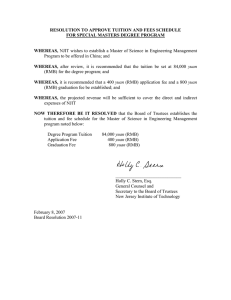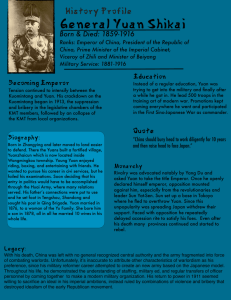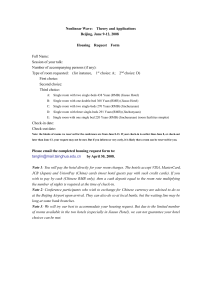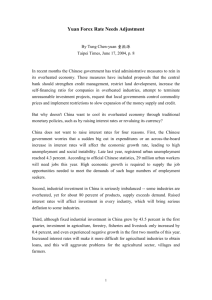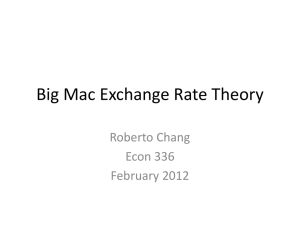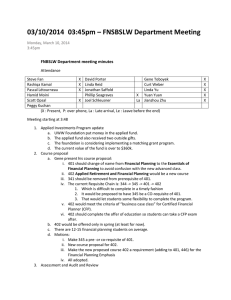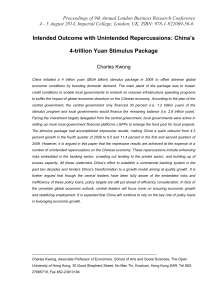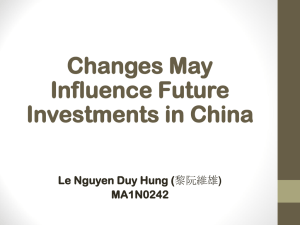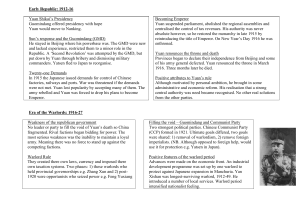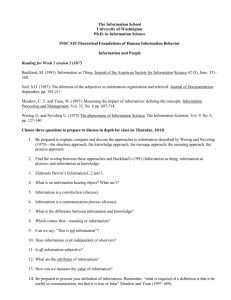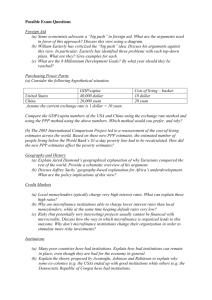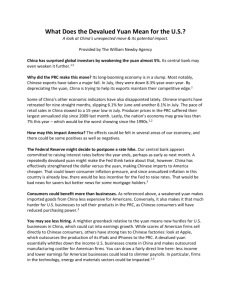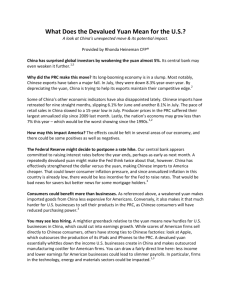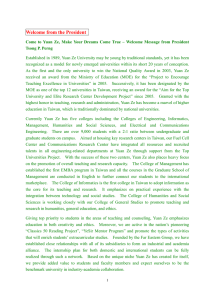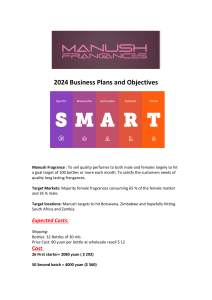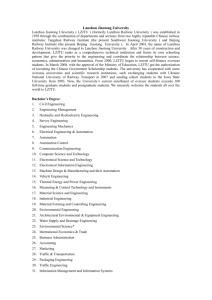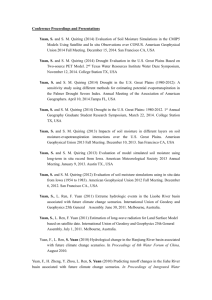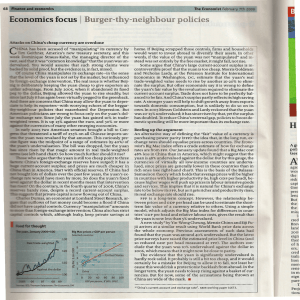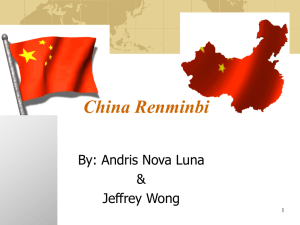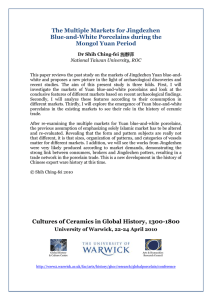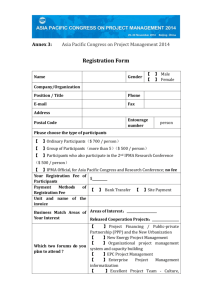Trade between China and the U.S.
advertisement
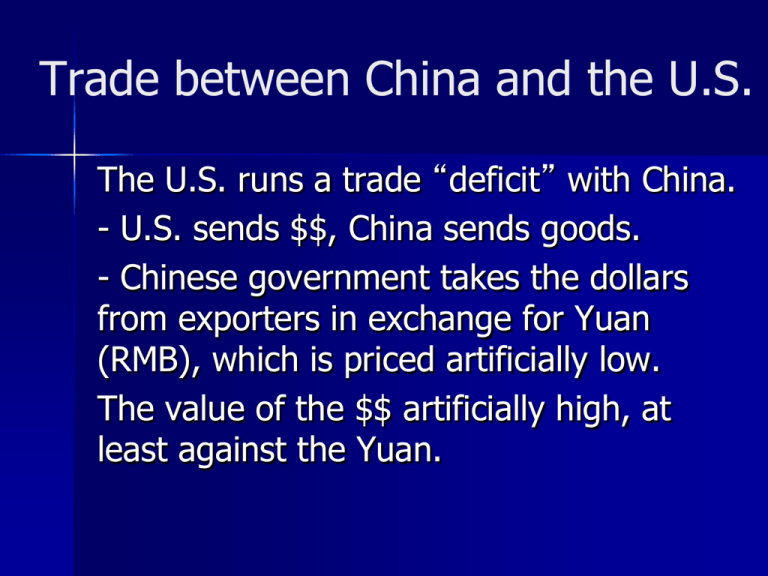
Trade between China and the U.S. The U.S. runs a trade “deficit” with China. - U.S. sends $$, China sends goods. - Chinese government takes the dollars from exporters in exchange for Yuan (RMB), which is priced artificially low. The value of the $$ artificially high, at least against the Yuan. The iPhone: “Made in China” What sense is that when less than 4% of the revenue goes there? Trade stats are weak, but still clear that China dominates in US relations. The total trade is less than is generally believed. Federal Reserve Bank, SF, 2011; of the 2.7% of GDP in trade with China, 1.2% is actually Made in China content. Consequence? China pays a premium for the $ to encourage us to buy more—it forces development in China (an implicit tax on their citizens). How much? 1996: $100 B foreign assets 2001: $200 B foreign assets 2011: $3.2 T foreign assets (half $) China and Japan Own More than $1 Trillion U.S. Debt Each Yield down from 5% to 1.5% Where do the $$ go? Government of China invests heavily in conservative assets, such as U.S. Treasury bonds. The U.S. runs big deficits, government of China buys the U.S. debt, sending back the $$ for goods bought in U.S. Why not buy U.S. companies? Politically not acceptable. Revalue the Yuan? Critics say China “manipulates” the Yuan. True, and the Swiss manipulate the Franc and the Japanese the Yen. So what if the value of the Yuan is “too low”? Double its value. In $ terms that means average factory wages go from $300 per month to $600 a month. Oral-B toothbrush ($30) is “Made in China” for $3 revenue in to China assembler. Make that $6. So what? Are those jobs coming back to America? Maybe they go to Vietnam. Where is the value? Not in assembly work. Consequence of China Policy Undervalued RMB (tied to $) hurts free-floating currency competitors—Japan, Korea, India Undervalued RMB means Chinese households earn less—subsidizing producers of exports. Low interest rates in China also mean households subsidize loans to borrowers in China. Poor performing banks in China subsidized by large spread between interest paid to savers and interest charged to borrowers. Thrift Pays: Up to a Point The people of China, who are poor, save perhaps 20-30% of their income. And the government saves foreign exchange Effective savings rate nears 50%. Interest rate paid is very low (subsidy to borrowers). Forced economic development. Life is better, but could be even better: Domestic consumption should rise. World Champion Savers: Capital Formation Exceeds Consumption What Does It Mean to Say China Is a Socialist Country? Will the Yuan Become a World Currency? Not Likely very soon In China Savings exceeds Investment Hence, a surplus of cash. Suppose you have a lot of Yuan. What do you do with it? Good luck finding stable investments in China. The currency not all that useful. The Tension The average American worker “owes” China about $11,000. Chinese people know the government is hoarding money that could be spent on education, roads, pollution control, … China will not subsidize U.S. deficits forever (especially at $1 Trillion/yr.) Is there a Solution? We may have each other by the throat. What can China do? Dump the dollars? They need US to keep millions working in factories—cut that off and serious economic and political problems. Spend more at home? Managed growth. Spend more in other countries? Power. U.S. needs to get its fiscal house in order. Stop endless deficits. Does any political leader address that?
